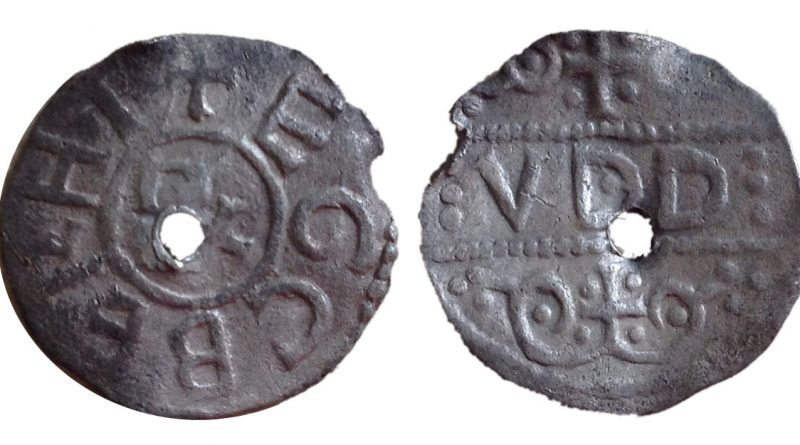Ecgberht of Kent Penny
The day after Robert Hawker sent in a penny of Ecgberht (see here), Colin Pearson rang me to say he had just found one. I had to smile, for this seemed like an example of the strange co-incidences that often crop up in the world of detecting. Colin said he had bought a second-hand Knox 800 machine and on his 75th birthday had found his first Anglo-Saxon penny. What a fabulous present! The coin came off a well-searched field and was only about four inches below the surface; it could have been located by all but the weakest detecting machines.
When I received images of the penny I had to smile again. Instead of it being a coin of Ecgberht of Wessex it turned out to be a penny of Ecgberht of Kent. Inside the inner circle on the obverse there is a large letter R and the surrounding legend reads +EGCBERHT. On the reverse between two beaded lines is VDD (the moneyer’s name); above and below is a cross set on an ornate base. In the Standard Catalogue it is listed and illustrated as number 874 and in North’s English Hammered Coinage it is number 200. Colin’s find would grade better than Fine but a small part of the edge has been lost. It has a more serious defect, in the shape of a hole roughly through its centre. I’ve seen a few pierced Anglo-Saxon pennies in the past but never one with a hole in this position.
Treasure
There is no sign of any other modification – for example, something that would turn it into a brooch. Therefore, whilst the hole is a mystery, a pierced coin of this date will need to be reported under the Treasure Act.
Valuation
Coin Valuation Service
Have your coin or artefact valued using my free online coin valuation service

